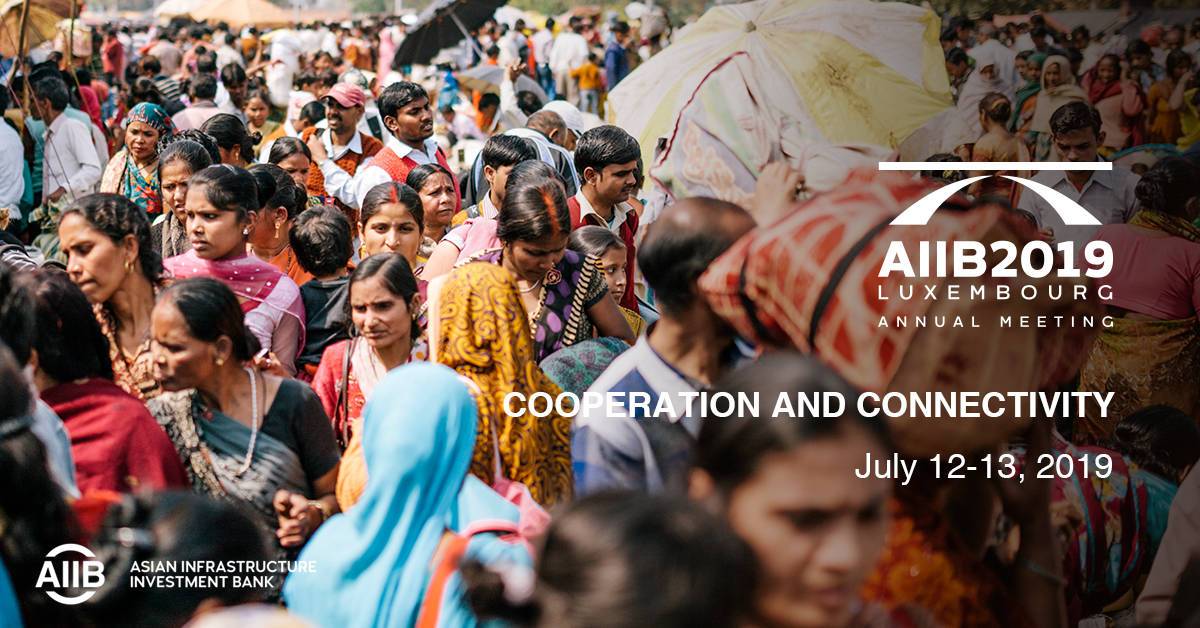Today at the 2019 Annual Meeting of the Asian Infrastructure Investment Bank (AIIB), I look forward to a discussion on where the actual gaps are with respect to equality of access for men and women to the benefits of infrastructure; and what data needs to be collected to measure the gaps and the impact of measures taken to close the gaps.
Infrastructure often overlooks the fact that different segments of the population may have differing needs and may benefit unequally from infrastructure projects. Poor infrastructure practices that do not reflect principles of inclusiveness can create real barriers for segments of the population to effectively participate in the economy, resulting in suboptimal economic and social outcomes.
Women remain disproportionately affected by inadequate infrastructure. Although women and girls often use infrastructure differently, women are frequently marginalized during identification, design and implementation of infrastructure projects and services received. Lack of access to water and electricity results in women and girls spending significant amounts of time on domestic chores, diverting them from pursuing education and income generation. Poor urban planning such as inadequate street lighting or poorly maintained facilities can expose women to elevated risks of harassment and sexual violence.
Furthermore, women are often under-represented in the infrastructure sector labor force—they do not have equal access to well-paying jobs created by infrastructure investments.
The lack of gender-disaggregated data is a major impediment to informing infrastructure planning. For example, mobility surveys undertaken in transport projects rarely consider differences across gender and other demographic and socioeconomic characteristics (for example, age and income). Another area that lacks sex-disaggregated data is road safety.
Administrative data on road safety—which typically includes police and health facility records, vital registration and death certification as well as insurance data—is valuable from a gender point of view, if sex-disaggregated. However, they seldom are.
At the 2018 AIIB Annual Meeting held in Mumbai, Harvard professor Rohini Pande spoke about the invisible infrastructure that is needed to ensure that the physical infrastructure achieves its objectives. Invisible infrastructure is defined as the social and human systems that enable citizens to realize their capabilities and escape poverty. Rural roads, by themselves, may not bring jobs to a village. For many male villagers, the road will enable them to get on a bus, go to the town and find work there. However, the road may not suffice for a poor female villager, since social norms and safety concerns may prevent her from getting on the bus in the first place. Indeed, transport projects like this often do not consider door-to-door challenges women face.
When measuring actual access to infrastructure—specifically the gender gaps—there is a need to go beyond collecting quantitative data and usage of the asset. There is a need to understand what may be preventing usage and the reasons.
Today in Luxembourg, the discussion panel “Gender Equality for Sustainable Infrastructure” will provide an opportunity to discuss gender gaps in access to infrastructure, how they can be addressed and—very importantly—how the gaps can be measured. As one of the youngest multilateral development banks, we hope that we can learn from this panel the experience and lessons from representatives of two other international financial institutions, representatives from two national government agencies and a city (Vienna) on how infrastructure can be designed, constructed and operated to benefit both men and women.
Beijing, April 29, 2025
Heads of MDBs Commit to Strengthening Collaboration Amid Growing Global Challenges and Uncertainties
AIIB President Jin Liqun joined the meeting of heads of MDBs from April 23-25 at the World Bank-IMF Spring Meetings in Washington, D.C.
READ MOREBeijing, April 21, 2025
How Do Floods Affect Medical Accessibility?
Flooding poses a significant threat to transport networks in Southeast Asia. The region’s low-lying cities are particularly vulnerable to intense monsoon rains and tropical storms. Climate change is expected to increase precipitation intensity, leading to more frequent and severe flooding. This heightened flood risk threatens the region’s critical infrastructure, including roads, bridges and railways.
READ MOREBeijing, April 07, 2025
Critical Condition: Investing in Sustainable Infrastructure to Protect Planetary Health
Climate change and human health are intrinsically linked, and with each extreme climate event that occurs the delicate balance of this relationship becomes clearer. Whether it is the recent wildfires in South Korea or flooding in Jakarta, the impact on human health is evident. Aside from immediate threat of death from these climate shocks, there are also long-term health implications to consider.
READ MOREBeijing, March 26, 2025
AIIB Advances Climate-Adaptive Solutions and Promotes Women’s Economic Empowerment in Cambodia
AIIB has achieved a milestone with the approval of its 300th project, the Cambodia Integrated Water Resources Management (CIWRM) Project. Aside from being a highlight in AIIB’s expanding portfolio, the project’s focus on gender aspects underscores AIIB’s commitment to consider relevant gender equality issues in its financing under the recently approved Gender Action Plan.
READ MORE

